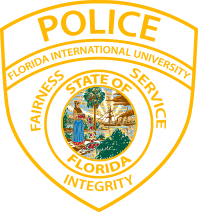Protocol for Identifying and Handling a Suspicious Package
Identifying a Suspicious Package
A suspicious letter or parcel might have some of the following indicators:
- Origin – Postmark or name of sender is unusual, unknown, or no further address is given.
- Postage – Excessive or inadequate postage.
- Balance – The letter is lopsided or unusually thick.
- Weight – The letter or package seems heavy for its size.
- Contents – Stiffness or springiness of contents; protruding wires or components; oily outer wrapping or envelope; feels like it contains powdery substance (When checking, do not bend excessively.)
- Smell – Particularly almond or other suspicious odors.
- Writing – Handwriting of sender is not familiar or indicates a foreign style not normally received by recipient. Common words or names are misspelled.
- Rub-on block lettering.
Handling a Suspicious Package
- Do not excessively handle or open a suspicious package.
- Immediately segregate it in an unused room or space.
- Attempt to verify the sender and/or the legitimacy of the package (i.e., ask the recipient if he/she was expecting a package that matches the suspect package’s size and shape.)
- If the letter remains suspect, call the FIU Department of Public Safety at extension 5911.
Notification
- Notify Supervisor
- Notify the Department of Public Safety
- Notify the Department Environmental Safety
Containment
- Minimize activities until appropriate response staff arrive. If absolutely necessary, move impacted individuals into nearest bathroom facility on floor.
- Non-impacted individuals on the impacted floor should be evacuated and await further instructions from the appropriate response staff.
- Facilities Management will be notified by the response team that the HVAC system, (heating and ventilation system) for impacted and adjacent areas and bathrooms should be immediately turned off.
- Isolate impacted area(s), e.g., shut door during exit. Do not allow any unprotected personnel into the impacted area.
- Retain all impacted material for the response team.
For additional information, please contact the Department of Public Safety at (305) 348-2626 or Environmental Health and Safety at (305) 348-2621.
Suspicious Package Protocol
Due to the Anthrax cases in Florida and concerns regarding potential biological or chemical threats, awareness among the public and law enforcement is heightened, especially in regards to suspicious packages or letters. The following provides information on the anthrax substance; characteristics of suspicious packages and the protocol for law enforcement and emergency service organizations to respond if a suspicious package or letter is received.
This information was provided by a variety of sources including the Center of Disease Control, Miami-Dade County Health Department, U.S. Postal Inspection Service, National Domestic Preparedness Office, Florida Department of Health, the Federal Bureau of Investigation and the Florida Department of Law Enforcement.
What is Anthrax
Anthrax is an infectious disease caused by the spore-forming bacterium Bacillus anthracis. Anthrax is very rare in humans and cannot be transmitted from person to person. It can appear as a crystalline or powdery substance that may or may not be seen.
Bacillus anthracis is an age-old bacterium that has caused disease for centuries in the world. Infection comes from contact with anthrax-infected animals or infected animal products. The spores are found widely in soil; therefore animals that feed on the ground tend to be those most likely infected. These animals usually include cows, sheep and goats. Humans can contract one of three forms of Bacillus anthracis: cutaneous (skin), intestinal and respiratory.
Most commonly, infected people have been exposed through their work such a s farmers, butchers, veterinarians and those who sort raw wool and tan hides. Symptoms vary on exposure but can include cold and flu-type symptoms. Doctors can prescribe antibiotics for treatment of the disease. To be effective, treatment should be initiated early. If left untreated, the disease can be fatal.
Characteristics of a Suspicious Package
Historically, the likelihood of receiving a package or letter containing suspicious substances or devices was remote. However, since the September 11th attacks and recent cases of Anthrax in Florida and elsewhere, it is important for citizens, to be aware of characteristics that are common to questionable packages. Some indicators for determining suspicious packages and letters include, but are not limited to the following:
- Foreign mail, air mail and special delivery, especially when the recipient is not expecting such mail
- Hand written or poorly typed addresses
- Lack of a return address or fictitious return address
- Misspelling of the title, (i.e., General, etc.), title only or wrong title with name
- Misspellings of common words
- Distorted handwriting or “cut & paste” lettering
- Cancellation or postmark and return address indicating different locations
- Excessive postage
- Restrictive labeling such as “Personal, Private”
- Markings such as “Fragile-Handle With Care” or “Rush-Do Not Delay” or “Deliver by Date/Time”
- Visual Distractions such as money or pornography
- Unusual size or shape (uneven or lopsided)
- Tube-type packages heavier at one end
- Unprofessional or sloppy wrapping
- Excessive security material such as masking tape or string
- Protruding wires, aluminum foil, oily stains or discoloration
- Unfamiliar couriers delivering official looking packages to specific individuals
- Peculiar odor
- Parcel unusually heavy for size
- Buzzing or ticking noise or sloshing sound
- Rigid or soft spots
- Pressure or resistance noted while removing contents of envelope or parcel

